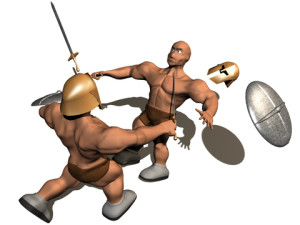In Part I of Where are the Brakes on This Thing, we discussed a few of the challenges of creating a satisfying conclusion to your novel. In Part II we’ll take up where we left off.
Climax Scene
As you draw near to the end of your novel, there will be a powerful climax scene. You need to be thinking about this, planning for it, and watching how the threads of the plot can bring you to this point.
 By now you are intimately acquainted with your characters; you know them well. You know how your hero is going to act to bring this climax about. Your main character’s actions will come into play. Let that MC have center stage. This is not the time to have a scene that is told about after the fact.
By now you are intimately acquainted with your characters; you know them well. You know how your hero is going to act to bring this climax about. Your main character’s actions will come into play. Let that MC have center stage. This is not the time to have a scene that is told about after the fact.
Throughout the novel your MC has undergone a distinct change and your climax scene will demonstrate that change. In fact, those loose threads mentioned earlier should, for the most part, be tied up prior to the final climax scene.
Nothing New
This is not the time to introduce anything new or different. The ending is no place for exposition. Can there be a change of setting? Yes. But it’s best if it’s a setting that has already become familiar to the reader.
The same with characters. Unless it’s a walk-on cardboard character, it’s best to keep to your principal actors.
In bad fiction, plot and characters are manipulated to achieve a desired end; in good fiction, everything that happens at the close seems inevitable. What makes the difference between the two? Practice and hard work.
Make Things Happen
Once the climax has run its course, and you’re into the conclusion, ensure that it’s an actual scene and not simply interior  monologue. Make things happen. In the same way that a good scene makes a good opening; a good scene can lend itself to a good ending. Even if your entire novel is more about inner attitudes, work to come up with something the MC can do as opposed to just thinking about it. Show don’t tell.
monologue. Make things happen. In the same way that a good scene makes a good opening; a good scene can lend itself to a good ending. Even if your entire novel is more about inner attitudes, work to come up with something the MC can do as opposed to just thinking about it. Show don’t tell.
As you near the close, everything narrows. All narrative clutter must go. Subordinate characters are off stage. Now only the major characters are left.
No need to try a clever twist such as introducing a new left turn in the plot. By this point, your novel has already established a context which involves the rules, the personalities, the stakes – you have everything you need to maintain momentum. Don’t waste it. In other words, keep the ending as simple and direct as possible.
context which involves the rules, the personalities, the stakes – you have everything you need to maintain momentum. Don’t waste it. In other words, keep the ending as simple and direct as possible.
Happy Ending – Or Not?
Will the ending always be happy? That question is highly subjective. What is happy for one person may not be so happy for another. Where the problems arise is when the author thinks it will be clever (cute?) to create a sad ending just to be different. Big Mistake!
 Once you, as the author, step outside of the natural flow of the story just to be different, you could ruin the entire effect. That effect you have worked so hard to create throughout the entire novel. This is no time to get cute. Continue to stay within the theme and boundaries you have already created (albeit unaware).
Once you, as the author, step outside of the natural flow of the story just to be different, you could ruin the entire effect. That effect you have worked so hard to create throughout the entire novel. This is no time to get cute. Continue to stay within the theme and boundaries you have already created (albeit unaware).
When you follow these tips, techniques, and strategies you can write a so-called sad ending and the reader will be happy.
Do what’s right for the novel, and you’ll have a story that ends in the right place, at the right time, in the right way!

 The Norma Jean Lutz Classic Collection now has three 3 available titles:
The Norma Jean Lutz Classic Collection now has three 3 available titles:
Flower in the Hills, Tiger Beetle at Kendallwood, and Rockin’ Into Romance
These clean teen reads, while authored in the past, offer timeless story lines that teens love.



